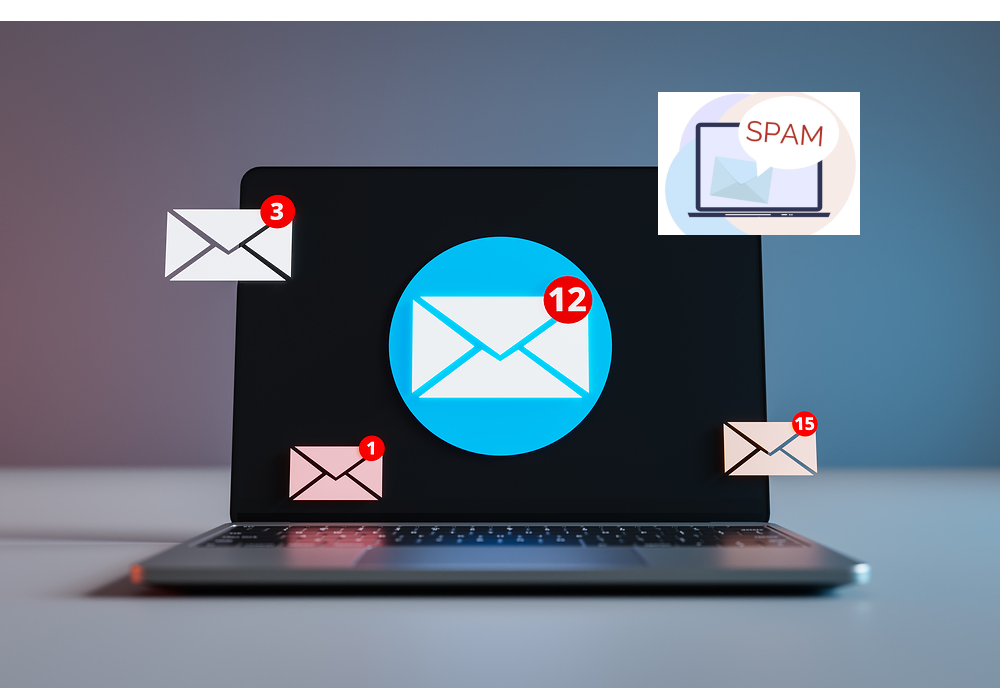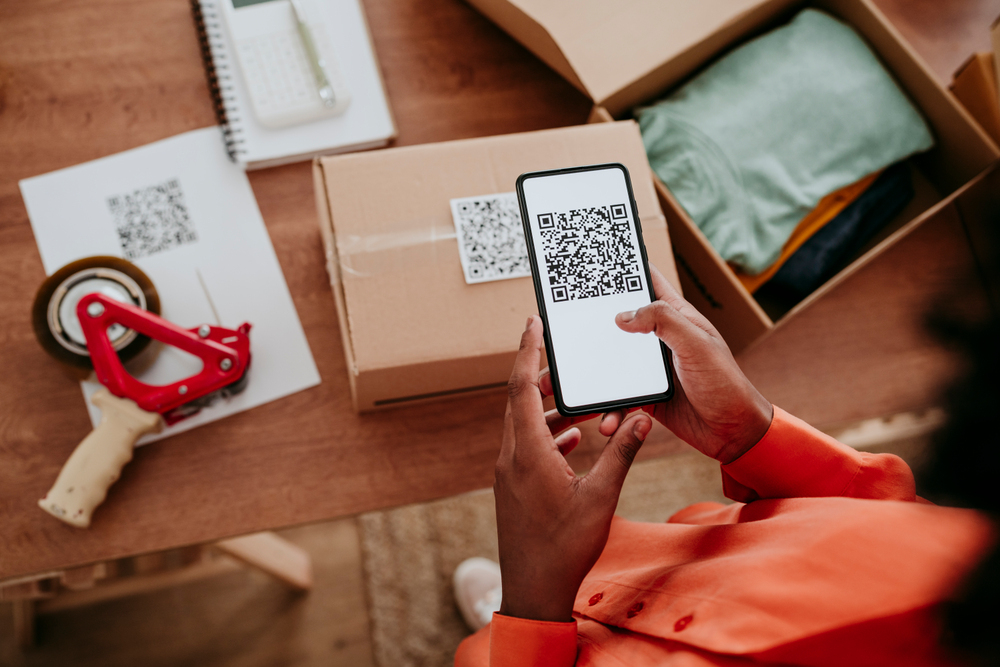Security Hub
All the latest news, updates, and announcements from QoneSafe

November 19, 2024
How to Spot and Avoid Phishing Scams in Your Inbox
As e-commerce continues to grow, so do the risks associated with online shopping. Phishing scams—fraudulent emails designed to steal personal information—are one of the most common cyber threats facing online shoppers today. Recognizing and avoiding these scams is essential for a secure shopping experience. Here’s what you need to know to stay safe. What is Phishing and Why is it So Common? Phishing involves deceptive emails or messages that mimic trusted sources, such as popular e-commerce sites, to trick users into revealing sensitive information like login credentials, credit card numbers, or personal data. With millions of emails exchanged daily, phishing remains one of the easiest and most profitable scams for cybercriminals to execute. Types of Phishing Scams ● Email Phishing: These are the classic phishing emails, often appearing to be from well-known companies or banks, urging you to “verify your account” or “reset your password.” ● Spear Phishing: These attacks are more targeted and personal, often using information about you to make the email look more legitimate. ● Smishing and Vishing: SMS phishing (smishing) and voice phishing (vishing) are on the rise, where scammers use text messages or phone calls to request personal information. How to Identify a Phishing Email ● Check the Sender’s Email Address: Phishing emails often come from addresses that look similar to a legitimate one but may have subtle differences (e.g., “amazon-security@secure-amzn.com”). ● Watch for Generic Greetings and Urgency: Phishing emails may address you with “Dear Customer” and create urgency by warning of account closure or urgent action needed. ● Look for Poor Grammar and Spelling: Many phishing emails contain typos, awkward phrasing, or poor grammar, which are often red flags. Why Verifying Links is Crucial One of the most important ways to protect yourself from phishing scams is to verify links before clicking. Hover over any link in an email without clicking to see where it directs you. If the URL looks suspicious, don’t click! Instead, navigate to the official website directly by typing it into your browser. What to Do if You Suspect a Phishing Attempt If you receive a suspicious email, avoid clicking any links or downloading attachments. Instead: ● Verify the Message: Contact the company directly using contact information on their official website. ● Report the Email: Many email providers have built-in tools for reporting phishing, which helps prevent further scams. Protective Measures for Safe Online Shopping ● Enable Multi-Factor Authentication (MFA): MFA adds an extra layer of security, making it harder for hackers to access your accounts. ● Keep Software Updated: Regular updates ensure that your software has the latest security features, which can prevent phishing attacks. ● Use Trusted Security Software: Use Trusted Security Software: Many antivirus programs can detect phishing emails and block malicious links. For an even easier, more secure option, try checking links in emails with the QoneSafe App. Staying alert to phishing scams and practicing these safety tips will help you enjoy a safer e-commerce experience. With online scams evolving, vigilance is the best protection against cybercriminals.
Read more
Understanding Quishing: The Evolving Threat of QR Code Phishing
As QR codes have become widely used in payment systems, menus, and advertising, they’ve also become a prime target for cybercriminals. QR phishing, or “Quishing,” is a tactic hackers use to trick unsuspecting users into scanning malicious QR codes, leading them to phishing websites or even malware. This blog will break down what Quishing is, how it started, and why it’s challenging to detect. What is Quishing? Quishing is a type of phishing that relies on QR codes to lure victims into compromising their personal information or devices. When scanned, these malicious QR codes can lead users to fake websites that look legitimate but are designed to steal personal or financial data. Cybercriminals often camouflage these fake sites to mimic popular services or retailers, making it difficult for users to detect the scam. When Did Quishing Start? Quishing emerged as QR codes gained popularity, particularly after the COVID-19 pandemic, when contactless transactions and touch-free experiences became more widespread. With QR codes popping up everywhere, from menus to product packaging, they’ve become a highly effective phishing tool for hackers. Why is Quishing Hard to Detect? Unlike phishing links in emails, which can be scrutinized by hovering over them, QR codes only show their target URL after scanning. This lack of transparency makes it hard for users to detect malicious codes before it’s too late. Additionally, fake QR codes are often placed over genuine ones or printed in legitimate-looking advertisements, making them even harder to spot. Where Do Fake QR Codes Appear? Quishing attacks often target high-traffic public spaces and digital advertisements. They can be found on posters, brochures, and even restaurant menus. By blending into real marketing materials, cybercriminals increase the chance that people will scan these QR codes without a second thought. Who are the Main Targets of Quishing? Quishing primarily targets people in busy or high-traffic environments, where they may not take the time to verify a QR code’s authenticity. It can also affect online shoppers and people frequently using QR codes for payments, as they’re more accustomed to scanning codes without hesitation. How to Protect Yourself from Quishing ● Verify QR Codes Carefully: When in doubt, don’t scan the code, or verify with the provider directly. ● Avoid Random Codes: Be cautious about codes in public spaces or on untrusted websites. ● Use Security Software: Some security apps can scan QR codes safely, alerting you if the link is malicious. We highly recommend using apps like QoneSafe, which offers a free QR code safety scanning feature and provides results within seconds. Quishing is an evolving threat, but with awareness and a few simple precautions, you can protect yourself from falling victim to this new form of phishing.
November 12, 2024

5 Common Online Shopping Scams in 2024
Introduction Scammers are getting more creative in tricking online shoppers. Whether it’s phishing emails or fake delivery notifications, it’s important to recognize the warning signs. Here are five of the most common online shopping scams and how QoneSafe can keep you safe. 1. Fake Delivery Messages ● Scammers send emails or texts pretending to be delivery services, prompting you to click a tracking link. ● QoneSafe Solution: Instantly verify delivery URLs to confirm they are legitimate. 2. Phishing Purchase Confirmations ● You receive a message about a purchase you never made, asking you to "verify" your payment information. ● QoneSafe Solution: Scan suspicious links from emails or SMS messages to prevent phishing attacks. 3. Fake Coupon Websites ● Fraudulent coupon sites offer deals but collect personal information instead. ● QoneSafe Solution: Verify coupon links before using them and block unsafe sites in real time. 4. Fake Online Stores ● Scammers create websites that mimic well-known brands, tricking you into sharing credit card information. ● QoneSafe Solution: Use the browser extension to detect unsafe websites as you browse. 5. QR Code Scams ● Scammers share QR codes that lead to phishing sites or malware. ● QoneSafe Solution: Scan QR codes instantly to verify their safety. Conclusion Scammers are evolving, but so are the tools to fight them. Use QoneSafe for scam detection and enjoy a safer shopping experience.
November 01, 2024

How to Spot and Avoid Fake Coupon Sites
Introduction Coupon hunting is more popular than ever, with websites offering everything from 10% off deals to free shipping vouchers. However, not all coupon sites are created equal. Many are designed to steal personal data or redirect users to phishing websites. In this guide, we’ll explore how to identify fake coupon sites and how QoneSafe can help protect your information while you hunt for the best deals. 1. Understanding How Fake Coupon Sites Work Scammers take advantage of people’s eagerness to save money by creating fraudulent coupon websites. These fake sites often mimic legitimate platforms, tricking users into thinking they’re getting exclusive deals. Once users click on these links or enter personal information, the scammers can: ● Steal sensitive data such as emails, passwords, or payment details. ● Install malware that monitors user activity or logs keystrokes. ● Redirect users to phishing sites designed to collect banking or social media credentials. 2. Common Red Flags of Fake Coupon Websites Here are some key signs that a coupon site might not be legitimate: ● Broken or Expired Links: Clicking on a coupon redirects to non-working pages or unrelated websites. ● Excessive Ads and Pop-ups: Scam sites flood users with ads to generate fraudulent revenue or install malware. ● Unverified Sources: The site may not be affiliated with the brand it claims to offer discounts for. ● Unusual Domain Names: URLs that include extra words or unusual suffixes (e.g., “bestdealz123.biz”). ● Requests for Personal Data: Some sites ask for phone numbers, credit card information, or account logins upfront. 3. The Hidden Dangers of Fake Coupons Even if you don’t enter personal information, clicking on fake coupons can have serious consequences. Here’s what can happen: ● Phishing Attacks: Redirects to fake checkout pages that steal payment details. ● Malware and Spyware: Some sites install software that tracks your online activities. ● Data Harvesting: Scammers collect your information and sell it on the black market. 4. How QoneSafe Protects Coupon Hunters With QoneSafe, you can enjoy the thrill of coupon hunting without the risks. Here’s how: ● Instant URL Verification: Scan any coupon link from emails, texts, or websites to ensure it's safe. ● Browser Extension for Real-Time Protection: Get instant alerts when you click on suspicious links. ● History Reports and Bookmarks: Track and manage your favorite coupon sites for easy access in the future. ● Multi-Source Scanning: Whether the link comes from a website, social media platform, or QR code, QoneSafe checks them all. 5. Top Tips for Safe Coupon Hunting ● Stick to Trusted Sources: Use well-known coupon aggregators like Honey or RetailMeNot. ● Avoid Giving Out Personal Information: No coupon site should ask for your payment details upfront. ● Check URLs Carefully: Ensure that the site’s URL matches the brand’s official domain. ● Use QoneSafe Before You Click: Scan every link, even from seemingly trustworthy sources. Conclusion Coupon hunting doesn’t have to be risky. With scam detection tools, you can verify every coupon link and enjoy your shopping experience without worrying about phishing scams or malware. QoneSafe is here for you and take your coupon hunting to the next level with total peace of mind.
November 01, 2024

Shopping Scam Trends in the U.S.: What You Need to Know in 2024
Introduction The online shopping landscape is booming, with U.S. e-commerce sales projected to grow year over year. However, this growth comes with increased risks as scammers get more sophisticated. From phishing emails disguised as delivery updates to fake online stores, cybercriminals are constantly finding new ways to steal personal data and money. In this article, we’ll explore some of the top shopping scam trends in 2024 and provide tips on how to protect yourself. 1. The Rise of Fake Delivery Notifications Fake delivery messages have become a favorite tool for scammers. They send text messages or emails pretending to be from major carriers like UPS, FedEx, or USPS, tricking recipients into clicking a malicious tracking link. 2. Growth of Social Media Shopping Scams Social media platforms such as Instagram and TikTok are increasingly being used by scammers to promote fake stores or phishing ads. These scams target users with attractive offers, only to steal their personal or payment information when they try to purchase. 3. Fake Coupon Sites and QR Code Scams QR codes are becoming more popular in both online and in-store shopping. Unfortunately, scammers are taking advantage of this trend by distributing QR codes that redirect to phishing sites. 4. Phishing Attacks via Purchase Confirmations Many consumers receive “order confirmation” emails for purchases they never made, with a link to cancel or verify the order. These phishing emails are designed to steal login credentials or credit card information. 5. Increase in Holiday Shopping Scams During major shopping events like Black Friday, Cyber Monday, and the holiday season, scammers ramp up their efforts. They create fake websites, run phishing campaigns, and spread fraudulent deals. Conclusion Shopping scams are becoming more sophisticated, but so are the solutions to protect you. Get yourself protected and shop confidently in 2024!
November 01, 2024
